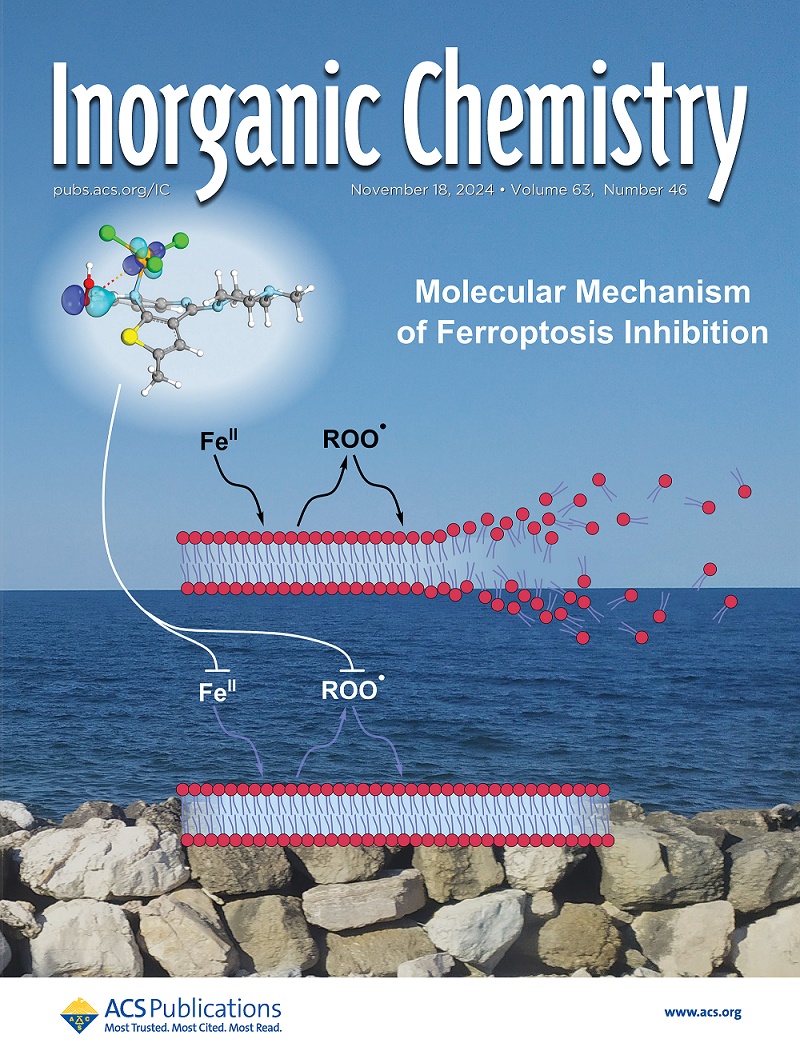Polarization of a Rotationally Degenerate Pair of Bands Causing the Uniaxial Magnetism of Permanent Magnets.
IF 4.7
2区 化学
Q1 CHEMISTRY, INORGANIC & NUCLEAR
引用次数: 0
Abstract
By analogy with the selection rule governing the uniaxial magnetism of magnetic insulators, we found that the uniaxial magnetism of permanent magnets (i.e., itinerant or metallic ferromagnets) requires the presence of a strong polarization (i.e., unequal populations of the two members constituting a pair) in one of the three rotationally degenerate pairs, (xz2, yz2), [xyz, (x2 - y2)z], and [x(x2 - 3y2), y(y2 - 3x2)], of the f-bands in rare-earth (RE)-based ones, and in one of the two rotationally degenerate pairs, (xz, yz) and (xy, x2 - y2), of the d-bands in RE-free ones. This requirement was confirmed by determining the magnetocrystalline anisotropy energies (MAEs) of permanent magnets SmCo5 and MnAl as well as the partial density of states (PDOS) plots of their rotationally degenerate pairs of bands on the basis of density functional theory (DFT) calculations. As a quantitative measure for the strength of the pair-polarization in each rotationally degenerate pair of bands, we defined the pair-polarization index Δp, which is associated with the calculated PDOS plots. Finally, we presented qualitative arguments with which to explain why a strong pair-polarization occurs in a particular rotationally degenerate pair in both RE-based and RE-free permanent magnets.引起永磁体单轴磁性的旋转简并带对极化。
通过与控制磁绝缘体单轴磁性的选择规则的类似,我们发现永久磁铁(即流动或金属铁磁体)的单轴磁性需要在稀土(RE)基f带的三个旋转简并对之一(xz2, yz2), [xyz, (x2 - y2)z]和[x(x2 - 3y2), y(y2 - 3x2)]中存在强极化(即组成一对的两个成员的不均匀居群)。在RE-free的两个旋转简并对之一(xz, yz)和(xy, x2 - y2)中。基于密度泛函理论(DFT)计算,测定了永磁体SmCo5和MnAl的磁晶各向异性能(MAEs)以及它们的旋转简并带对的偏态密度(PDOS)图,证实了这一要求。作为对每个旋转简并带对极化强度的定量度量,我们定义了对极化指数Δp,并将其与计算的PDOS图相关联。最后,我们提出了定性的论点来解释为什么在re基和无re永磁体中,在特定的旋转简并对中都会出现强的对极化。
本文章由计算机程序翻译,如有差异,请以英文原文为准。
求助全文
约1分钟内获得全文
求助全文
来源期刊

Inorganic Chemistry
化学-无机化学与核化学
CiteScore
7.60
自引率
13.00%
发文量
1960
审稿时长
1.9 months
期刊介绍:
Inorganic Chemistry publishes fundamental studies in all phases of inorganic chemistry. Coverage includes experimental and theoretical reports on quantitative studies of structure and thermodynamics, kinetics, mechanisms of inorganic reactions, bioinorganic chemistry, and relevant aspects of organometallic chemistry, solid-state phenomena, and chemical bonding theory. Emphasis is placed on the synthesis, structure, thermodynamics, reactivity, spectroscopy, and bonding properties of significant new and known compounds.
 求助内容:
求助内容: 应助结果提醒方式:
应助结果提醒方式:


